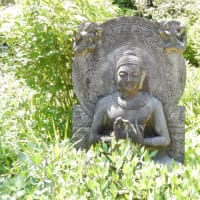
From the world system of Mongolia, the Ottoman Turks (1299-1922), the Safavid dynasty (1502-1736), and the Mughal Empire (1526-1858) returned to the cosmopolitan civilization by Islamic civilization. It was at its peak. During this period, European civilization was nearing the end of the Italian Renaissance, and Spain became a powerful force, and capitulation*1 was established between France and the Ottoman Turks, but this was an inequality that would later be tied to Asian countries. It became the model for the treaties. The characteristic of this cosmopolitan civilization of Islamic civilization was that the Ottoman Empire and the Mughal Empire were Sunnis, while the Safavids were Shiites. In the Ottoman Empire, administrative rule by the Qadi developed *2, while in the early days of the Mughal Empire there was also Shia influence *3, which led to the emergence of mixed religions *4 during the era of Emperor Akbar at its peak. . The Safavid dynasty reached its peak during the time of Abbas the Great, but by this time it had become pluralized*5 and prospered through trade, but was destroyed by Afghanistan.
*1 Capitration Freedom of residence, freedom of trade, and non-violation of residence within Turkish territory were confirmed for non-Muslims (France was the first). After that, it led to extraterritoriality and the abolition of tariff autonomy.
*2 In Ottoman Turkey, kadis (judges) were selected from the ulama (a class of scholars in Islamic society) in the central and rural areas and conducted trials based on Shariah (law).
*3 Bayram Khan, the prime minister of the Mughal Empire who served Emperor Humayun and raised Emperor Akbar, was a Shiite, and was trying to rule under Shiite leadership.
*4 mixed religion
The arguments of the orthodox Islamic theologians, who were proud, narrow-minded and obstinate in their way of thinking, turned his mind away from Islam, and in 1582 he (Akbar) made a kind of deism that blended various religions to be founder of the "Religion of God" (Dine Ilahi).
*5 The Safavid dynasty was a Shiite dynasty, but during the reign of Abbas the Great, Isfahan was the capital, and various races such as Indians and Armenians lived and traded there.
The Ottoman occupation of Constantinople in 1453 and its subsequent expansion into the Balkans (culminating in the First Invasion of Vienna in 1529) indirectly led to the discovery of the New World by Spain, which was at the western edge of European civilization. (1492) and Portugal's expansion into the Indian Ocean (Vasco da Gama, Pioneering the Sea Route to India 1498), but it also turned the attention of Italian cities, which were strongly linked to Islamic civilization, to the Atlantic Ocean. Venice, which was tied to the Byzantines, faced the threat of the Ottoman Turks, while Genoa's rise to prominence may have something to do with Genoa's investment in Spain and Portugal.
Even in the Mongol Empire, the accumulation of capital ultimately did not progress due to wasteful spending, but as in the case of Samarkand, which prospered in the Thamur Empire after that, although it cannot be called capital, there was some kind of urge to accumulate in Asia. It may have existed in successive empires as well. Capital accumulation in modern European civilization, however, was neither the Suleymaniye Mosque in the Ottoman Empire, nor the capital of Isfafar in the Safavid dynasty, nor the Taj Mahal in the Mughal Empire.
It was accelerated by the fact that gold and silver sent from the New World America gathered in Seville, Spain, and were scattered throughout Europe through trade and religious wars. The accumulation of capital had begun even before that (Fugger and Medici families), and the development of weapons and the development of mines had a lot to do with the accumulation of capital. It changed from a battle between city-states to a battle between nations and growing sovereign nations, but in the end it turned into a conflict between sovereign nations, Spain and France*. European civilization in this era did not only traded, but also destroyed, and used its wealth to develop weapons. It was a mercantilist to generate military spending, and the navy was the key to defending trade in Portugal, Spain, the Netherlands, and England, and it was possible to hold the trade zone only if the materials for warships and artillery could be secured. Hegemony moved from Holland to England, where the Industrial Revolution blossomed.
* 1492: Columbus discovered the New World, 1517: Start of the Reformation, Conflict between Spain and France over Italy, Dutch War of Independence, 1588: Battle of England and Spain. In 1571 Spain and Venice defeated the Ottoman Turks at the Battle of Lepanto. Thirty Years' War (1618-1648), Treaty of Westphalia (1648), Puritan Revolution (1646), Glorious Revolution (1688), Treaty of Karlowitz (1699) (Turkey cedes Hungary to Austria), but Spain held great power until the Treaty of Westphalia. However, the frequency of their interventions was probably more frequent than in the United States today . Fifty years after the Treaty of Westphalia, the Ottoman Empire also began to decline.
All rights reserved to M Ariake


























※コメント投稿者のブログIDはブログ作成者のみに通知されます